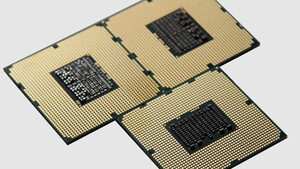Den Artikel auf Anandtech hat ich inzwischen auch gelesen.
Dabei ist bei 4,5GHz und 8 Threads ja noch nicht einmal Schluss, laut Anandtech schaffen der Core i9-8950HK[ und der Xeon E-2186M mit Thermal Velocity Boost (TVB) sogar 4,8GHz maximalen Turbotakt und beide haben 6 Kerne / 12 Threads bei ebenfalls 45W TDP.
4,5GHz wird es aber nur geben, wenn nur ein Kern belastet wird, bei Last auf allen 4 Kerner wird so ein Takt allenfalls nur wirklich ganz kurz anliegen, dann weder das Power Limit im UEFI noch die Kühlung dürften reichen um länger auch nur die gleichen Taktraten wie bei vergleichbaren Desktop CPU zu halten.Vissi schrieb:Hier geht es ja zur Sache. 4,5 ghz und 8 Threads, da sind wir ja leistungsmäßig beim Desktop.
Dabei ist bei 4,5GHz und 8 Threads ja noch nicht einmal Schluss, laut Anandtech schaffen der Core i9-8950HK[ und der Xeon E-2186M mit Thermal Velocity Boost (TVB) sogar 4,8GHz maximalen Turbotakt und beide haben 6 Kerne / 12 Threads bei ebenfalls 45W TDP.



